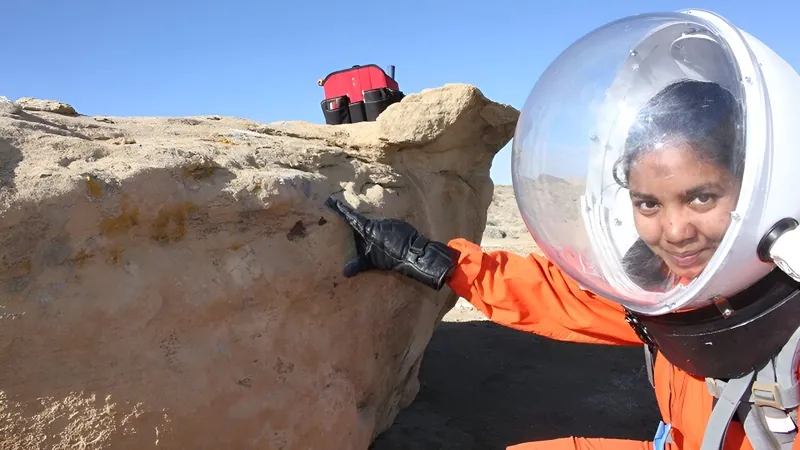
Exploring Mars-Like Environments: Lichens' Remarkable Resilience Revealed in Groundbreaking Simulations
2024-10-11
Author: Siti
In a remarkable display of resilience, lichens are found nearly everywhere on Earth, thriving on a multitude of surfaces ranging from rocks to building facades. Comprising fungi partnered with photosynthetic organisms, these intriguing life forms not only exist on every continent but have also demonstrated an astonishing ability to withstand the harsh conditions of space, including exposure outside the International Space Station.
This unique characteristic has sparked considerable interest among researchers investigating what forms of life could potentially endure the Martian environment. Astrobiologists are particularly drawn to lichens as Earth analogues for studying the possibility of life on the Red Planet. In fact, lichens play such a crucial role in the desert ecosystems surrounding two Mars analog stations in North America that they prompted a dedicated biodiversity assessment during simulated Mars missions.
The Mars Desert Research Station in Utah, situated on Ute and Paiute lands, and the Flashline Mars Arctic Research Station in Nunavut, Canada, located within Inuit Nunangat, serve as experimental hubs. Here, teams of “Martians” undergo preparations for real-life crewed missions to Mars, which includes the exploration of local ecosystems. This innovative research is not just theoretical; it has practical implications for understanding how microbial life, including lichens, could be documented during space exploration missions.
During the groundbreaking Mars 160 missions from 2016 to 2017, teams conducted extensive floristic surveys at both the Utah and Nunavut stations aiming to catalog the lichen biodiversity present. Equipped with simulated spacesuits, mission specialists engaged in Extravehicular Activities (EVAs) to meticulously scout various habitats. Their efforts led to the collection of over 150 lichen specimens, which were later analyzed at the National Herbarium of Canada.
The results of this ambitious scientific endeavor were compelling: 35 lichen species were identified at the Mars Desert Research Station, while 13 unique species were documented at the Flashline Mars Arctic Research Station. The utilization of advanced techniques such as morphological examination, internal analysis, chemical investigation, and DNA barcoding played a pivotal role in this identification process.
These findings not only enrich our understanding of lichen biodiversity but also serve as a critical resource for future space missions, offering insights that could help scientists recognize and study life forms on Mars. As the push for Martian exploration intensifies, the role of Earth’s hardy lichens as indicators of potential life on other planets is more relevant than ever. The ongoing research continues to offer exciting possibilities for what the future holds in the search for extraterrestrial life!




 Brasil (PT)
Brasil (PT)
 Canada (EN)
Canada (EN)
 Chile (ES)
Chile (ES)
 España (ES)
España (ES)
 France (FR)
France (FR)
 Hong Kong (EN)
Hong Kong (EN)
 Italia (IT)
Italia (IT)
 日本 (JA)
日本 (JA)
 Magyarország (HU)
Magyarország (HU)
 Norge (NO)
Norge (NO)
 Polska (PL)
Polska (PL)
 Schweiz (DE)
Schweiz (DE)
 Singapore (EN)
Singapore (EN)
 Sverige (SV)
Sverige (SV)
 Suomi (FI)
Suomi (FI)
 Türkiye (TR)
Türkiye (TR)